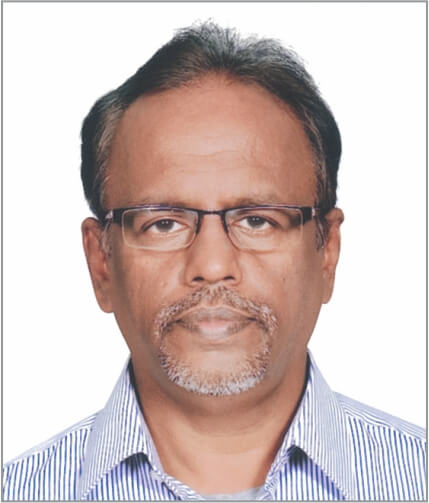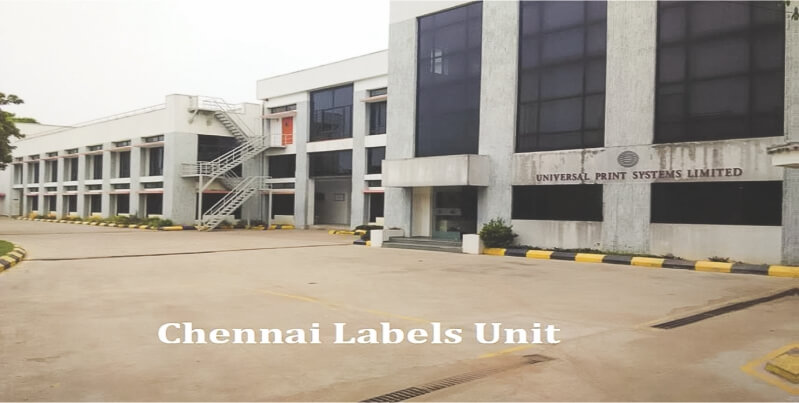“Our single point focus is to become an industry leader in the packaging segment, providing innovative solutions to our clients. Being a part of a large group, we have the advantage to leverage our expertise in conventional print technology”

Since its inception in 1941, Manipal Technologies Limited (MTL) has undergone a flourishing growth curve over the past eight decades, whilst expanding its repertoire of services across different business verticals. The company has become one of the largest print, technology, and digital solution providers in the country. Beginning its packaging division in 2008 with a single facility, the company has now established its plants in three different locations for the production of – mono cartons, rigid boxes, labels, and corrugated boxes. Further, MTL has recently started a new R&D laboratory and a Customer Experience Centre with dedicated state-of-the-art facilities for research activities.
In conversation with Paper Mart magazine, Mr. Janardan Damodaran, Vice President and SBU Head—Packaging & Labels, Manipal Technologies Ltd., sheds some light on the growth journey of the company, details about the packaging division, R&D efforts, outlook on the packaging industry following the onset of the pandemic, and the company’s short-term and long-term goals.
Paper Mart: Could you present a brief overview and significant achievements of Manipal Technologies Limited?
Janardan Damodaran: Manipal Technologies Ltd. (MTL) is a part of the diversified USD 2 billion-enterprise ‘Manipal Group’ which has established a major presence in the areas of – BFSI, education, healthcare, IT, retail, printing, and publishing, with a workforce of 8000+ providing solutions and services to its clients. Starting in 1941, Manipal Technologies has had a flourishing growth curve over these years, whilst expanding its repertoire of services across disparate business verticals.
Quick to gauge an opportunity, with sound business acumen, has led the founders of Manipal Technologies to innovate with their integrated solutions across industry verticals like banking, telecom, education, media publishing, consumer goods and retail, financial services, aviation & transport, and the public sector. Their offerings have largely focused on delivering secure and hassle-free financial transactions, and cutting-edge marketing and branding communications across the digital platforms to their clientele. As these domains of secure payment transferring and targeted communications have swiftly upgraded to the “e-niche”, Manipal Technologies only bettered its services and solutions to the best of industry standards.
MTL is a market leader in secure printing, payment card manufacturing, printing, and personalization for MasterCard, VISA and RuPay. In addition to this, we are also one of the most preferred partners for “Rural Unified Banking Services” commonly known as the Financial Inclusion initiative in India. We have a presence in the entire value chain for these initiatives including customer-facing business correspondents. MTL also offers a Risk & Fraud Management System that covers both issuing and acquiring portfolios by implementing user rules, power rules and statistical model (ACE) along with in-built self-learning modules to consistently deliver high detection rates with low false positives.
PM: Please describe the packaging division of the company – the infrastructure, product portfolio, manufacturing capabilities, and machinery installed at your facility. Has there been any upgradation or capacity expansion in the recent past?
JD: Manipal Technologies Limited set up its packaging division in 2008. With the operations of this facility stabilizing, it can guarantee high-quality products and the assurance of brand protection for all your packaging requirements.
From conceptualization to creation, the division can craft dynamic designs coupled with the practicality of use for all types of cartons using the latest application software for computer-aided carton designing. The division delivers packaging solutions to diverse segments with a special focus on pharmaceutical, food and beverages, and personal products/toiletries segments by providing packaging mono-cartons, trays, holders, and corrugated boxes.
State-of-the-art machines like Komori Lithrone with UV curing and Mitsubishi Diamond are utilized for printing on boards. Post-Press operations like die punching, lamination, spot UV varnishing, foil stamping, embossing, side-pasting, etc. are possible on equipment from BOBST and Heidelberg. The division also has the capability to provide cartons with customized options such as a window with intermittent cut, pre-sealed liner, and a window with pre-heated creasing. Technologies like printing on non-absorbent surfaces are also present. The facility is spread over 40,000 sq ft and comprises a conversion capability of close to 600 tonnes of paperboard per month.
“From conceptualization to creation, the (packaging) division can craft dynamic designs coupled with the practicality of use for all types of cartons using the latest application software for computer-aided carton designing… The division also has the capability to provide cartons with customized options.”
The company is always on the lookout for the latest technology so that it can provide value to its esteemed clients.
PM: Could you shed some light on your R&D efforts?
JD: The Research & Development division helps the business to experience future growth by developing new products or process improvements or cost reduction measures. In addition to basic research, R&D has been demonstrating its capability in competencies such as chemistry, secured transactions, IT and vision, printed electronics, design & automation, and print. The team also collaborates with dedicated teams of experts, as well as advanced research and test facilities available in the research institutes across premier institutes for different research verticals.
MTL has recently opened a new Research & Development laboratory and a Customer Experience Centre in Manipal with state-of-the-art facilities for research activities. The advantage of having an in-house R&D helps us to create new products, source new technology, and equipment for enhancing production capabilities. Various developments which are not commonly seen have been a hallmark of our R&D efforts.
PM: As the pace and the degree of digital transformation accelerated after the pandemic – how did this create an impact on the company?
JD: The impact of the coronavirus crisis on the packaging industry has been mixed—and this pattern has already been playing out across the globe. Demand has risen sharply for packaging for groceries, healthcare products, and e-commerce transportation. At the same time, demand for industrial, luxury, and some B2B-transport packaging could decline. The impact on us has been moderate as our customer portfolios and exposures are in the sectors of FMCG, pharma, and textiles.
PM: How has the landscape of the Indian paper packaging industry changed after COVID-19? What are the key trends and how do you envisage the segment in the coming years?
JD: The packaging industry in India is expected to register a CAGR of approximately 26.7 percent during the period (2021-2026). The rapid growth of the market is primarily driven by the pharmaceuticals and food & beverage industries. With an influx of huge investments in end-user industries including food processing, personal care, and pharmaceutical, there is a scope for expansion of the packaging market.
“The facility is spread over 40,000 sq ft and comprises a conversion capability of close to 600 tonnes of paperboard per month.”
After the COVID-19 pandemic, as most developed countries are either burning wastepaper or using it for landfill to avoid the spread of the coronavirus, there’s been a huge shortage in raw materials for the Indian paper mills. The manufacturers of Indian corrugated cardboard boxes are continuously working to keep transport packaging flowing to manufacturers of essential products, including packaging for food and other consumer products, medical & pharmaceutical products, tissue, and hygiene products.
The rise of the Indian middle class, the rapid expansion of organized retail, the growth of exports, and India’s rising e-commerce sector is further facilitating growth. According to the Indian Institute of Packaging (IIP), the packaging consumption in India has increased by 200 percent in the past decade, rising from 4.3 kg per person per annum (pppa) to 8.6 kg pppa.
Two technological advancements which are already having a huge impact on the sector are smart packaging and robotics. Smart packaging may conjure up images of a milk bottle communicating with you like an AI assistant, but the reality of smart packaging is much more fascinating. Smart packaging can be divided into two categories: active packaging, which provides functionality like moisture and oxygen control, and intelligent packaging, which can communicate product changes and other information.
When using a mix of technologies in manufacturing, complications can arise. In the past, manufacturers have kept a distance between their human workers and robots, but with the creation of superior artificial intelligence collaborative working between people and cooperative robots is increasing safety and productivity.
The packaging sector will continue to be shaped by external influences over the coming years which will increase the rate of digital transformations within the sector. Economic growth, consumer trends, and brand owner trends will force packaging and paper companies to rethink their operations and adopt new technologies to succeed in an ever-evolving climate.
PM: What kind of growth has been registered so far at the packaging division of Manipal Technologies?
JD: Starting off with a single plant, we are now having plants in three different locations catering to varied segments with the special focus on – mono cartons, rigid boxes, labels, and corrugated boxes. It has been an exciting journey during which the adaptation to emerging trends and providing solutions to our clients has been the bedrock.
PM: What are the company’s key long-term and short-term goals for the packaging segment?
JD: Our single point focus is to become an industry leader in the packaging segment, providing innovative solutions to our clients. Being a part of a large group, we have the advantage to leverage our expertise in conventional print technology and merge it with emerging solutions and offer an exciting array of services and products.




